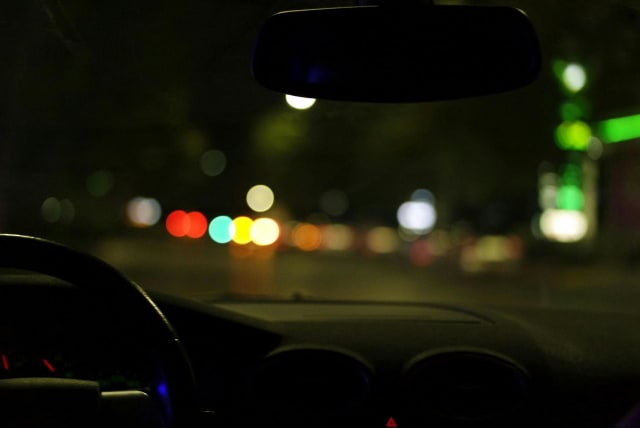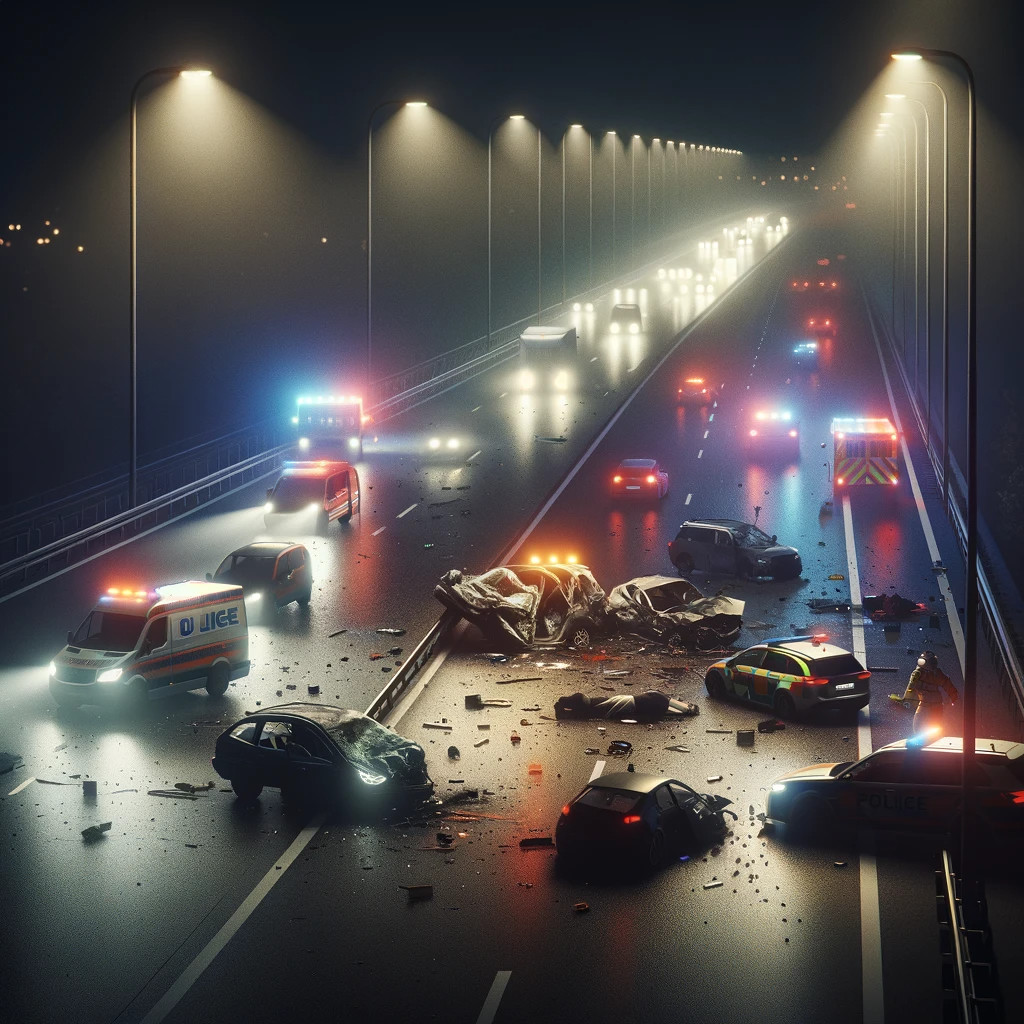Is night driving more dangerous than you think?

Driving at night is akin to navigating an entirely different world, an experience where light and darkness play with our vision, with our night vision embodying the central force in the struggle for safety. In the night's darkness, the environment transforms completely: illumination is sparse, shadows become sharper, and glaring lights from oncoming vehicles challenge our sight. The task of the driver becomes significantly more complex as fatigue sets in and the increased risk of encountering other drivers, who are grappling with the same challenging conditions, adds to the equation. This introduction to the nocturnal driving experience emphasizes the stark contrast to daytime navigation and highlights the unique challenges and precautions necessary to ensure safety on the roads after dark.
Challenges of Night Driving
Driving at night can be a complex task, especially when darkness impairs visibility. The challenges of fatigue and the increased risk of encountering other drivers facing similar difficulties make night driving more hazardous. Here are some additional challenges to consider:
Limited Visibility: Darkness limits our ability to see, making it harder to identify obstacles and navigate the road.
Fatigue and Reduced Alertness:Fatigue and reduced alertness significantly increase the risks of the accident at night. Attention, critical to performance, decreases in late hours due to lack of sleep and natural circadian rhythms. A study by the National Center for Biotechnology Information in the United States confirms that attention is lowest at night, improving by noon and peaking in the afternoon. It affects work, study and driving schedules, and highlights the danger of driving at night due to decreased cognitive function.
Glare from Oncoming Vehicles: High beams from oncoming vehicles can cause glare and impair driving ability.
Adjusting Headlights: Proper management of high and low beam headlights is especially needed at night to maintain good visibility without blinding other drivers.
Other Drivers' Behavior: Other drivers may be tired, inattentive, or even intoxicated, increasing the risk of accidents.
Animals and Obstacles on the Road: The increased risk of nighttime driving in Israel is heightened by wildlife, such as jackals, wolves, and hyenas, which are more active at night and harder to spot. Research by Dror Danboom of the Technion revealed these animals adjust their movements to avoid roads during the day, significantly increasing their road crossings at night. This nocturnal behavior, aimed at minimizing human encounters, elevates the chances of vehicle-wildlife collisions in the dark, making night driving riskier due to reduced visibility. The research also found that road lighting helps species like hares, hedgehogs, and eagle owls avoid collisions at night by enabling them and drivers to spot each other. This highlights the need to consider animal welfare when constructing new roads in Israel.
Weather Conditions: Rain, fog, or other atmospheric conditions can be more challenging at night.
Identifying Signs and Lanes: Identifying road signs, signage, and lanes is more complicated at night, especially in areas without adequate lighting.
By ensuring optimal visibility, driving more cautiously than during the day, and staying alert, you can significantly reduce risks and navigate safely through the night.
The Connection Between Myopia and Night Vision Problems in Driving
Vision plays a crucial role in night driving, as it directly impacts the ability to perceive and react to the environment. Myopia, or nearsightedness, is a common vision problem that can significantly affect night driving. It is characterized by difficulty seeing distant objects clearly, which becomes more pronounced in low-light conditions.
Night myopia, also known as nocturnal myopia, is a specific type of myopia that occurs in low-light conditions. It causes a decrease in visual acuity and contrast sensitivity, making it challenging to see clearly at night. This can lead to symptoms such as blurred vision, glare from headlights, and difficulty discerning road signs and obstacles.
The causes of night myopia are related to the way the eye adapts to darkness. In low light, the pupil dilates to allow more light to enter, which can increase the eye's optical imperfections and lead to myopic vision. Additionally, the reduced contrast and lack of visual cues at night can exacerbate the focusing difficulties associated with myopia.
Myopia and night myopia can significantly impact night driving by reducing visual acuity and contrast sensitivity. Addressing these vision problems with appropriate corrective measures is essential for safe driving after dark.
Solutions for Improving Night Vision
To address this issue, the Swedish company Multilens has developed a unique radiation filter called the LLR Night Cover, designed specifically for improving driving and vision at night. This filter reduces glare and bright blue light from strong LED lighting, easing the blurriness and glare experienced during night driving. For patients with night myopia, the LLR radiation filter can be combined with a minus half or minus quarter lens to experience an improvement in visual acuity and overall comfort in vision.
To improve the flexibility of the eyes, there are exercises designed to release the external eye muscles and bring about relaxed activity of the pupil. For example, working on the flexibility and relaxed activity of the pupil can improve vision. It is important to teach the eyes to see without strain and to focus in a relaxed manner. Exercises like the "sun exercise" work on the flexibility and relaxed activity of the pupil, improving vision. It's crucial to learn to see without effort, focusing in a relaxed way. The "single dot exercise" can help with this.
Glasses, contact lenses, and laser eye surgery are the three main solutions for addressing vision problems, including night myopia or difficulties in night vision. Each of these solutions offers unique benefits, and the choice between them depends on the individual's personal needs, preferences, and medical condition.
Glasses are the simplest and most accessible solution. They provide immediate correction for various vision problems and can be easily customized. However, they can be cumbersome in certain situations, such as during physical activity or in harsh weather conditions.
Contact lenses offer a frameless solution, allowing for more natural vision and full freedom of movement. They are suitable for people who do not want to feel the limitation of glasses, but they require daily maintenance and may cause infections or discomfort if not properly fitted or managed.
Laser eye surgery is a safe solution for correcting various vision problems, including myopia, hyperopia, and astigmatism. The surgery involves refocusing the cornea to achieve complete vision correction. This process allows patients to see clearly and accurately without the need for glasses or contact lenses, significantly improving their quality of life. Assuta Optic emphasizes personalized and professional care for each patient, with excellent surgery results. Laser eye surgery is a perfect solution for those seeking a permanent solution to their vision problems without compromising their quality of life. The surgery is relatively short, usually followed by a brief recovery period, allowing patients to return to their daily routine quickly.
In conclusion, night driving presents unique challenges that demand careful attention to ensure safety on the road. Among these challenges, night myopia, or the decrease in visual acuity under low-light conditions, stands out as a significant concern for drivers. While solutions such as glasses and contact lenses can offer some relief, laser eye surgery emerges as the optimal solution for addressing night myopia and other vision problems. By providing a permanent correction to the eyes' focusing ability, laser eye surgery can significantly enhance night vision, reduce the risks associated with night driving, and contribute to safer roads for everyone. It is crucial not to neglect vision issues, as they can severely impact one's ability to navigate safely after dark. By taking proactive steps to manage and treat vision problems, drivers can ensure a safer driving experience at night.
This article was written in cooperation with Assuta Optic
Jerusalem Post Store
`; document.getElementById("linkPremium").innerHTML = cont; var divWithLink = document.getElementById("premium-link"); if (divWithLink !== null && divWithLink !== 'undefined') { divWithLink.style.border = "solid 1px #cb0f3e"; divWithLink.style.textAlign = "center"; divWithLink.style.marginBottom = "15px"; divWithLink.style.marginTop = "15px"; divWithLink.style.width = "100%"; divWithLink.style.backgroundColor = "#122952"; divWithLink.style.color = "#ffffff"; divWithLink.style.lineHeight = "1.5"; } } (function (v, i) { });

